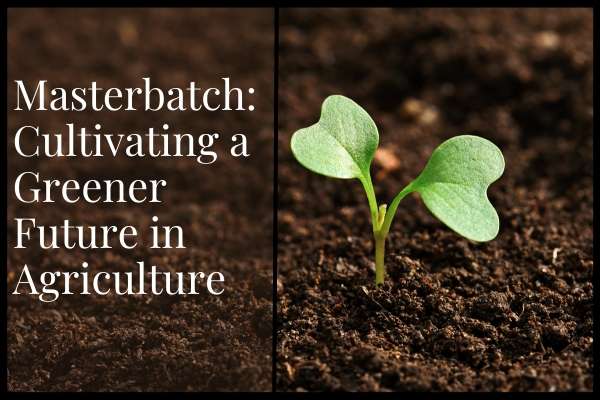
Sep 19,2023
In the ever-evolving world of agriculture, innovation is the driving force that fuels growth and sustainability. One such innovation making waves in the agricultural sector is using Masterbatch. This versatile material transforms how we approach farming and crop management, leading us toward a greener and more productive future.
Modern agriculture faces numerous challenges, including increasing crop yields, reducing environmental impact, and ensuring food security for a growing global population. Farmers and agricultural scientists are constantly seeking innovative solutions to address these challenges.
Enter Masterbatch, a game-changer in the field of agriculture. Masterbatch is a concentrated mixture of pigments, additives, and carrier resins used to enhance the properties of plastics. It plays a crucial role in improving agricultural practices in several ways.
Mulch films are commonly used in agriculture to cover the soil around plants. They serve multiple purposes, including weed control, soil moisture retention, and temperature regulation. Masterbatch is used to make these films more durable and efficient.
Statistics show that the global agricultural films market, including mulch films, is steadily growing. It was valued at approximately $9.1 billion in 2020 and is projected to reach around $12.4 billion by 2026, with Masterbatch playing a pivotal role in this expansion.
Nutrient management is a critical aspect of agriculture. Masterbatch produces controlled-release fertilizers (CRFs), slowly releasing essential nutrients to plants over an extended period. This controlled release mechanism ensures optimal nutrition and reduces nutrient runoff, minimizing environmental pollution.
According to a report by Mordor Intelligence, the global controlled-release fertilizers market is expected to grow at a compound annual growth rate (CAGR) of over 5% during the forecast period from 2021 to 2026.
Greenhouses are essential for protecting crops from adverse weather conditions and pests. Masterbatch is used in the production of greenhouse films, which not only shield plants but also optimize light transmission. This ensures that crops receive the right amount of sunlight for healthy growth.
The global greenhouse film market is witnessing substantial growth, driven by the increasing demand for protected cultivation and the adoption of advanced farming techniques. The market is expected to reach over $6 billion by 2025.
Water scarcity is a significant concern in agriculture. Drip irrigation systems, which efficiently deliver water directly to plant roots, are gaining popularity. Masterbatch materials are used to manufacture components of these systems, such as pipes and hoses, making them durable and resistant to degradation.
The global drip irrigation market is projected to grow at a CAGR of around 10% between 2021 and 2026, driven by the need for water-efficient irrigation methods.
Biodegradable masterbatch solutions are emerging as sustainability becomes a top priority in agriculture. These materials break down naturally, reducing plastic waste in farming. Biodegradable mulch films, for example, are gaining traction due to their environmental benefits.
The global biodegradable plastics market is expected to reach nearly $9 billion by 2027, reflecting the growing interest in sustainable agricultural practices.
Masterbatch is a versatile ally in the fast-evolving world of agriculture, where innovation is the key to a sustainable future. Its contributions to soil health, controlled-release fertilizers, crop protection, irrigation efficiency, and sustainability are reshaping the agricultural landscape.
Masterbatch offers a promising path forward as we navigate the challenges of feeding a growing global population while preserving our environment. With the use of Masterbatch in agriculture projected to continue its upward trend, farmers and researchers can look forward to a future where productivity and sustainability coexist harmoniously.
In conclusion, Masterbatch is not just a component of agricultural progress but a catalyst for change. It enables us to cultivate a greener, more productive, and sustainable future in agriculture, ensuring that our fields remain fertile and our planet thrives. As the statistics and insights show, the journey of Masterbatch in agriculture has only just begun, promising brighter days ahead for farmers and the environment alike.